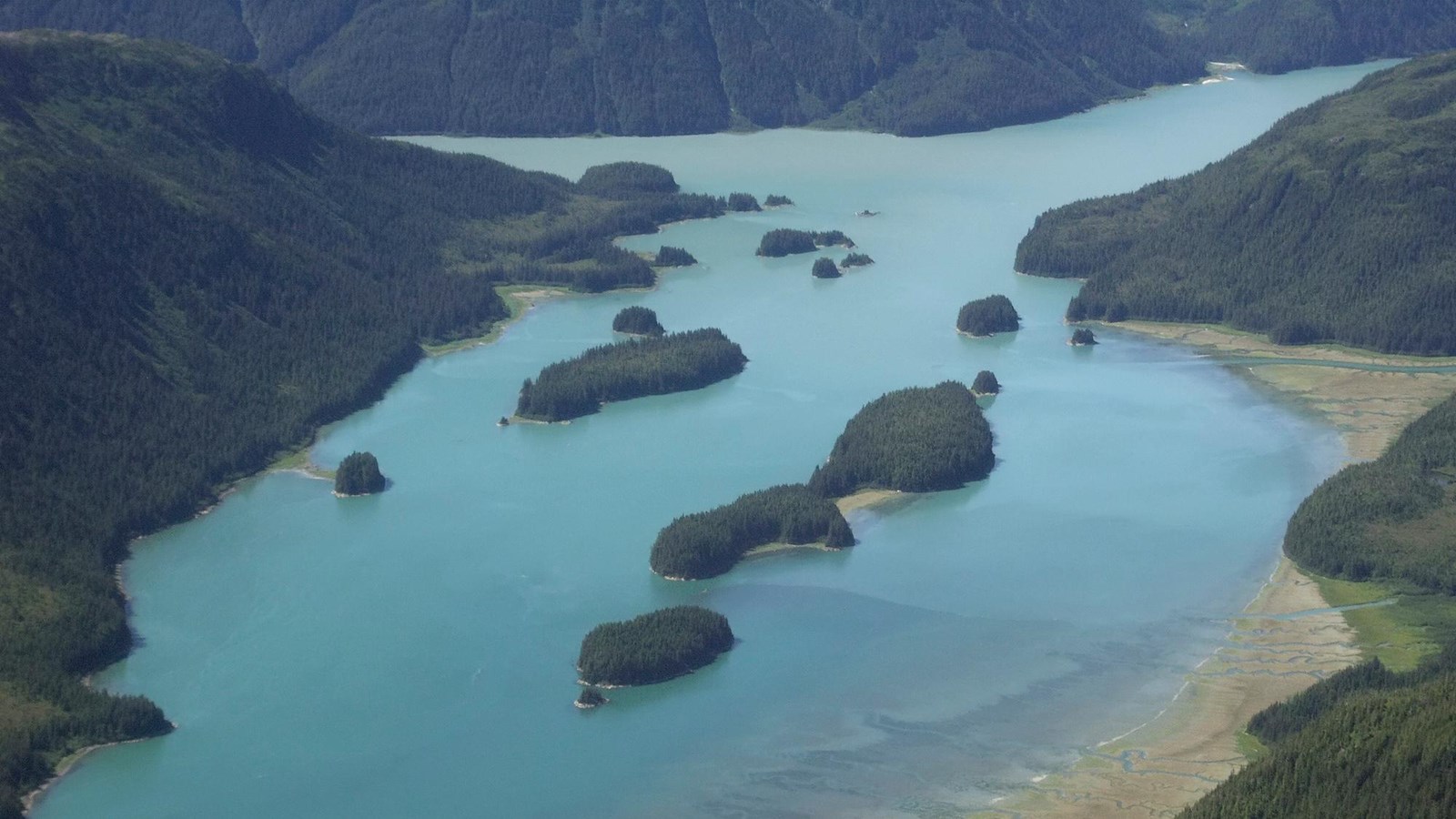Last updated: April 1, 2021
Place
Dundas Bay

NPS Photo
Quick Facts
Location:
58.329444, -136.321111
In 1794, Captain George Vancourver and the crew aboard HMS Discovery became the first Europeans to explore and chart the coastlines of Icy Strait. Numerous tidewater glaciers in the region contributed to the ice-choked conditions of the strait, forcing the ship to deploy longboats from its deepwater anchroage at Port Althorp. The men aboard these longboats, commanded by Lt. Joseph Whidbey, sought refuge from the ice in side bays as they pushed their way inland. Aboard Discovery, Cptn. Vancouver described the following report of the longboats' July 11th explorations:
"[In one bay] the party advanced nearly in a north-west direction about 2 leagues, where their further progress was nearly stopped by shoals, rocky islets, and rocks, extending across the branch, which decreased to about a mile in width, and for the space of about two miles, was occupied by these iselets and rocks..."
Captain Vancouver named a prominent point adjacent to this bay Point Dundas after Henry Dundas, Secretary of State for War under King George III of England. The bay itself remained without an English name until 1879 when it was named Dundas Bay, apparently after the point, by William H. Dall of the U.S. Coast & Geodetic Survey. In 1900, the Dundas Bay Cannery was built and operated on the bay's shore until its closure in 1931. The remains of the cannery can still be found here.
Today, Dundas Bay remains a popular destination for boaters to explore the shoals, rocky islets, and rocks first described by Cpt. Vancouver in 1794.
"[In one bay] the party advanced nearly in a north-west direction about 2 leagues, where their further progress was nearly stopped by shoals, rocky islets, and rocks, extending across the branch, which decreased to about a mile in width, and for the space of about two miles, was occupied by these iselets and rocks..."
Captain Vancouver named a prominent point adjacent to this bay Point Dundas after Henry Dundas, Secretary of State for War under King George III of England. The bay itself remained without an English name until 1879 when it was named Dundas Bay, apparently after the point, by William H. Dall of the U.S. Coast & Geodetic Survey. In 1900, the Dundas Bay Cannery was built and operated on the bay's shore until its closure in 1931. The remains of the cannery can still be found here.
Today, Dundas Bay remains a popular destination for boaters to explore the shoals, rocky islets, and rocks first described by Cpt. Vancouver in 1794.
